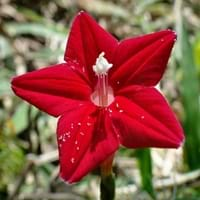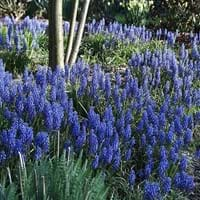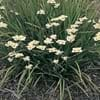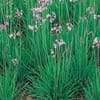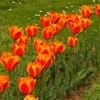Life Span
Annual and Perennial
Perennial
Type
Bulb or Corm or Tuber
Bulb or Corm or Tuber
Origin
South Africa
Mediterranean, Southeastern Asia
Types
Not Available
Not available
Habitat
Subtropical climates, subtropical regions
Fields, Open areas, Terrestrial
USDA Hardiness Zone
9-10
Not Available
AHS Heat Zone
10-8
Not Available
Habit
Mat-forming
Clump-Forming
Minimum Height
Not Available
Minimum Width
Not Available
Flower Color
Red, Magenta
White, Yellow, Blue, Purple, Pink, Olive, Blue Violet
Flower Color Modifier
Bicolor
Bicolor
Fruit Color
Not Available
Brown, Black
Leaf Color in Spring
Gray Green
Not Available
Leaf Color in Summer
Light Green
Light Green
Leaf Color in Fall
Several shades of Green
Several shades of Green
Leaf Color in Winter
Light Green
Light Green
Leaf Shape
Long, Alternate
Narrow
Plant Season
Spring, Summer
Not Available
Sunlight
Full Sun
Full Sun, Partial Sun
Growth Rate
Medium
Not Available
Type of Soil
Loam, Sand
Not Available
The pH of Soil
Acidic, Neutral
Not Available
Soil Drainage
Well drained
Well drained
Bloom Time
Late Spring, Early Summer, Summer
Not Available
Tolerances
Drought
Drought
Where to Plant?
Ground
Container, Ground, Pot
How to Plant?
Seedlings
From bulbs, From Rhizomes, Seedlings
Plant Maintenance
Medium
Medium
Watering Requirements
Needs good drainage, Needs high amount of water
Get enough water whenever the soil is dry, Keep the ground moist but not water-logged, Keep the Soil well drained
In Summer
Lots of watering
Lots of watering
In Spring
Moderate
Moderate
In Winter
Average Water
Average Water
Soil pH
Acidic, Neutral
Not Available
Soil Type
Loam, Sand
Not Available
Soil Drainage Capacity
Well drained
Well drained
Sun Exposure
Full Sun
Full Sun, Partial Sun
Pruning
Prune to control growth, Remove damaged leaves, Remove dead branches, Remove dead leaves
Remove damaged leaves, Remove dead branches, Remove dead leaves
Fertilizers
All-Purpose Liquid Fertilizer, High-phosphorous fertilizers used
All-Purpose Liquid Fertilizer
Pests and Diseases
Pests and diseases free
Armored scales, Crown rot, Slugs
Plant Tolerance
Drought
Drought
Flower Petal Number
Single
Single
Fragrant Flower
Not Available
Yes
Showy Foliage
Not Available
No
Foliage Texture
Fine
Medium
Foliage Sheen
Matte
Glossy
Attracts
Butterflies, Hummingbirds
Bees, Butterflies
Allergy
Unknown
Diarrhea, Itchiness, Skin irritation, Stomach pain, Vomiting
Aesthetic Uses
Beautification, Ornamental use, Showy Purposes, small hedge
Cottage Garden, Landscape Designing
Beauty Benefits
Not Available
Not Available
Environmental Uses
Air purification
Air purification
Medicinal Uses
Anti-fungal, Purgative
Diuretic, Stimulates new cell growth
Part of Plant Used
Leaves
Buds, Flowers
Other Uses
Beneficial species for attracting pollinators
Traditional medicine, Used for fragrance
Used As Indoor Plant
No
Yes
Used As Outdoor Plant
Yes
Yes
Garden Design
Alpine, Container, Rock Garden / Wall, Tropical
Container, Cutflower, Mixed Border, Rock Garden / Wall
Botanical Name
Ipomoea quamoclit
MUSCARI
Common Name
star glory , hummingbird vine
Grape Hyacinth
In Hindi
Kunjlata
अंगूर जलकुंभी
In German
Ipomoea quamoclit
Traubenhyazinthen
In French
Ipomoea quamoclit
Muscari
In Spanish
Ipomoea quamoclit
Muscari
In Greek
Ipomoea quamoclit
grape hyacinth
In Portuguese
Ipomoea quamoclit
Muscari
In Polish
Ipomoea quamoclit
Szafirek
In Latin
Ipomoea quamoclit
Muscari
Phylum
Magnoliophyta
Tracheophyta
Class
Magnoliopsida
Magnoliopsida
Order
Solanales
Asparagales
Family
Amaryllidaceae
Asparagaceae
Clade
Angiosperms, Asterids, Eudicots
Angiosperms, Monocots
Tribe
Ipomoeeae
Not Available
Subfamily
Not Available
Scilloideae
Number of Species
Not Available
Difference Between Cypress Vine and Grape Hyacinth
If you are confused whether Cypress Vine or Grape Hyacinth are same, here are some features about those plants to help you choose better. Many people think that these two plants have the same characteristics, but one can see Cypress Vine and Grape Hyacinth Information and learn more about it. Fertilizers required for proper growth of Cypress Vine are All-Purpose Liquid Fertilizer and High-phosphorous fertilizers used, whereas for Grape Hyacinth fertilizers required are All-Purpose Liquid Fertilizer. Hence, one should know the basic difference between Cypress Vine and Grape Hyacinth if you are planning to have them in your garden to enhance its beauty.
<
Flowering PlantsImportance of Cypress Vine and Grape Hyacinth
Want to have the most appropriate plant for your garden? You might want to know the importance of Cypress Vine and Grape Hyacinth. Basically, these two plants vary in many aspects. Compare Cypress Vine and Grape Hyacinth as they differ in many characteristics such as their life, care, benefits, facts, etc. Every gardener must at least have the slightest clue about the plants he wants to plant in his garden. Compare their benefits, which differ in many ways like facts and uses. The medicinal use of Cypress Vine is Anti-fungal and Purgative whereas of Grape Hyacinth is Diuretic and Stimulates new cell growth. Cypress Vine has beauty benefits as follows: Not Available while Grape Hyacinth has beauty benefits as follows: Not Available.
Compare Facts of Cypress Vine vs Grape Hyacinth
How to choose the best garden plant for your garden depending upon its facts? Here garden plant comparison will help you to solve this query. Compare the facts of Cypress Vine vs Grape Hyacinth and know which one to choose. As garden plants have benefits and other uses, allergy is also a major drawback of plants for some people. Allergic reactions of Cypress Vine are Unknown whereas of Grape Hyacinth have Diarrhea, Itchiness, Skin irritation, Stomach pain and Vomiting respectively. Having a fruit bearing plant in your garden can be a plus point of your garden. Cypress Vine has no showy fruits and Grape Hyacinth has no showy fruits. Also Cypress Vine is not flowering and Grape Hyacinth is not flowering . You can compare Cypress Vine and Grape Hyacinth facts and facts of other plants too.
